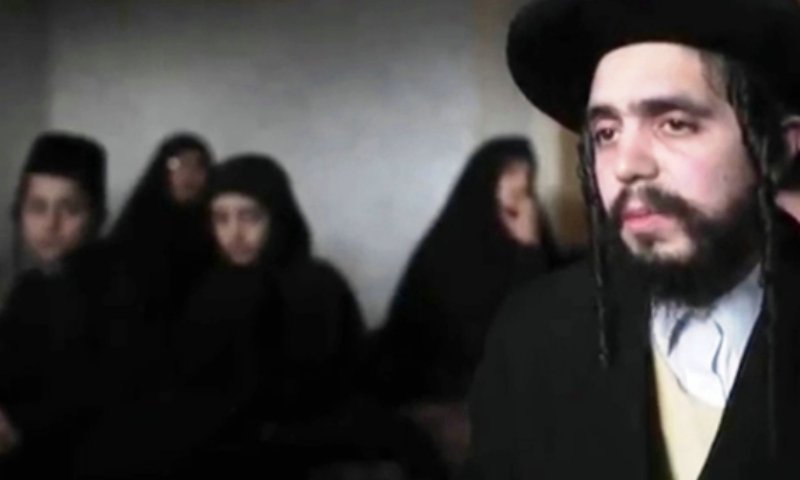
'Lev Tahor' government raid
Continued pursuit of 'Lev Tahor' cult: After the heads of the sect and its members fled to Israel, United States, Canada and Guatemalan authorities likewise decided to treat the severe abuse of children and minors • Children and infants of the sect were taken by the authorities
- Atara Sternbuch
- י' אלול התשע"ו

According to Guatemalan news agencies, the buildings of “Lev Tahor” cult have been raided by the Public Ministry that is investigating allegations regarding child abuse.
Authorities received reported stories of parents using severe punishments causing injuries.
In 2014, 230 members of the Lev Tahor cult forced to leave the village. following religiously tainted conflicts with its Mayan residents, who are Roman Catholic. The local elders’ cabinet voted against Lev Tahor.
Antonio Adolfo Perez y Perez of San Juan La Laguna was accused of abuse of power and discrimination. He got sentenced to house arrest. The local newspaper Prensa Libre reported. Perez had lost his state immunization since he did not get re-elected.
Lev Tahor maintained a minute presence in San Juan La Laguna, a village approximately 90 miles west of Guatemala City, for six years, but it expanded considerably following a chance appeared to complain of torture by Canadian authorities. Tensions seem to have widened after the newcomers sought to impose its practices on the domestic people.
Originally an Israeli, the cult leader, Shlomo Helbrans moved to the United States where he was sentenced for kidnapping in 1994 and served two years jail time before his deportation to Israel in 2000. Helbrans then settled in Canada.
Helbrans sentenced for the abduction of 13-year-old Shai Fahima, a boy he was preparing for his Bar Mitzva. He previously got sent to 4-12 years in prison but after an appeal, his sentence reduced.
This high-profile case attracted considerable attention in the U.S., and obtained additional attention when Helbrans successfully persuaded New York prison officials to abandon their demand that all prisoners shave for a picture when entering prison. After the State Parole Board had determined (November 1996) to free Helbrans following two years, suspicions came up that he received exceptional treatment.
After his release, Helbrans operated a yeshiva in Monsey, N.Y., and deported to Israel in 2000. He next located in Canada, where he was granted refugee status in 2003, claiming his life is endangered in Israel.
Authorities received reported stories of parents using severe punishments causing injuries.
In 2014, 230 members of the Lev Tahor cult forced to leave the village. following religiously tainted conflicts with its Mayan residents, who are Roman Catholic. The local elders’ cabinet voted against Lev Tahor.
Antonio Adolfo Perez y Perez of San Juan La Laguna was accused of abuse of power and discrimination. He got sentenced to house arrest. The local newspaper Prensa Libre reported. Perez had lost his state immunization since he did not get re-elected.
Lev Tahor maintained a minute presence in San Juan La Laguna, a village approximately 90 miles west of Guatemala City, for six years, but it expanded considerably following a chance appeared to complain of torture by Canadian authorities. Tensions seem to have widened after the newcomers sought to impose its practices on the domestic people.
Originally an Israeli, the cult leader, Shlomo Helbrans moved to the United States where he was sentenced for kidnapping in 1994 and served two years jail time before his deportation to Israel in 2000. Helbrans then settled in Canada.
Helbrans sentenced for the abduction of 13-year-old Shai Fahima, a boy he was preparing for his Bar Mitzva. He previously got sent to 4-12 years in prison but after an appeal, his sentence reduced.
This high-profile case attracted considerable attention in the U.S., and obtained additional attention when Helbrans successfully persuaded New York prison officials to abandon their demand that all prisoners shave for a picture when entering prison. After the State Parole Board had determined (November 1996) to free Helbrans following two years, suspicions came up that he received exceptional treatment.
After his release, Helbrans operated a yeshiva in Monsey, N.Y., and deported to Israel in 2000. He next located in Canada, where he was granted refugee status in 2003, claiming his life is endangered in Israel.
תגובות
{{ comment.number }}.
הגב לתגובה זו
{{ comment.date_parsed }}
{{ comment.num_likes }}
{{ comment.num_dislikes }}
{{ reply.date_parsed }}
{{ reply.num_likes }}
{{ reply.num_dislikes }}



הוספת תגובה
לכתבה זו טרם התפרסמו תגובות